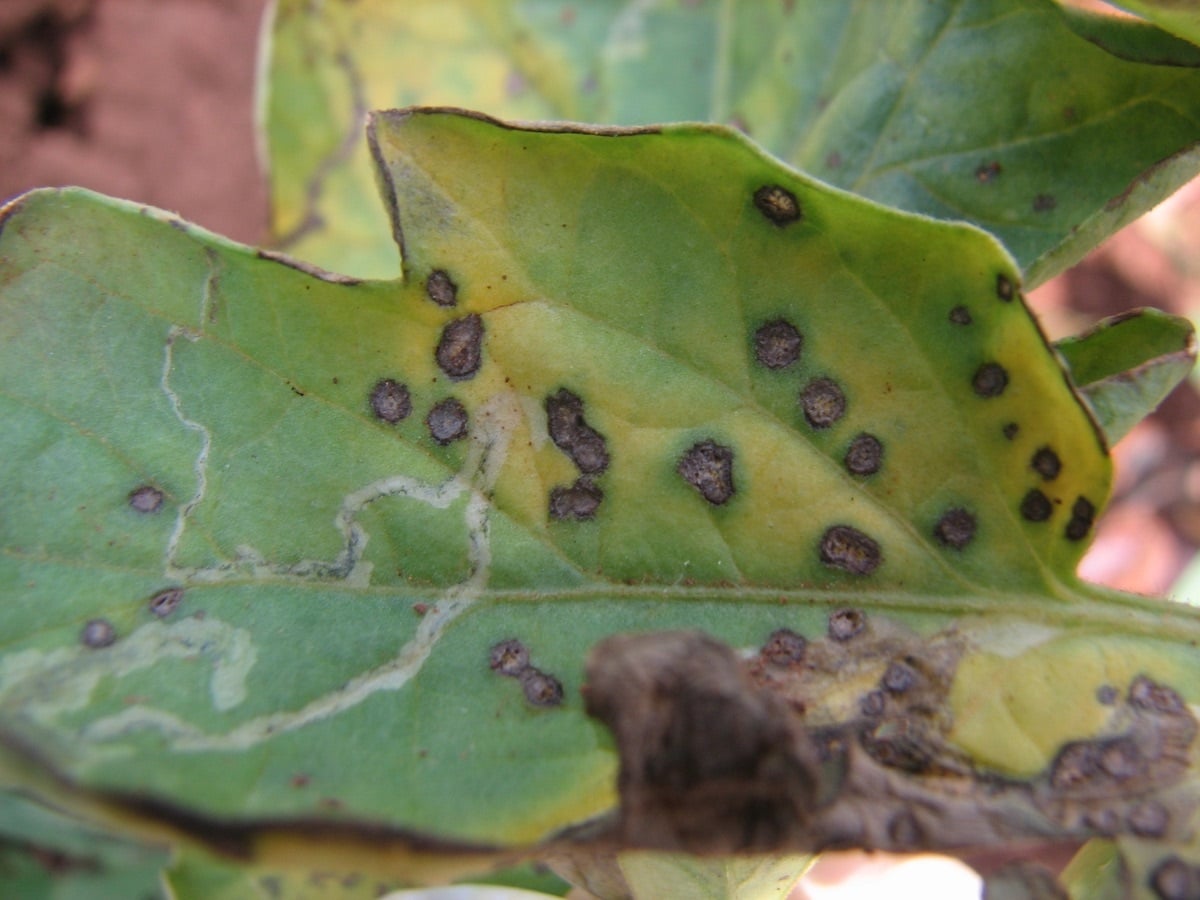

The Septoria It is a serious disease (fungus) that usually affects many plants, if it is not treated correctly it can destroy leaves and can limit growth. Also called yellow leaf spot, is a disease caused by the fungus Septoria tomatoes.
This fungus is a plant killer Since it can overwinter in dead leaves or garden leaves, it can greatly affect the foliage and growth of many common plants, medicinal plants, and edible plants.
Features Septoria


In different fruits and vegetables, its main characteristics is the appearance of a brown or yellow spot on the upper or lower face of the leaves, the spots are round, with colors such as greyish-tan brown and usually measure between 1.5 and 6.5 mm.
The fungus is produced by a pathogen that is from the family of the Mycosphaerellaceaeyour symptoms are the stains that it leaves on the branchesbeing worrying when it comes to the plantation of wheat, rice, beans, since they are perishable productsthis fungus can spoil up to 40% of the harvest, leading to losses for farmers.
It can affect plants just after they have entered the flowering phase and normally appears in leaves as it progresses it spreads upwards, affecting the whole plant.
The start of the fungus is yellow, then turns brown until the leaf or plant finally withers. On the plant it produces low growth and foliage and reproduces in very humid places.
If you are wondering, how can we remove the Septoria of our plants, infected leaves should be removed In order to limit the spread of the fungus, one should immediately resort to an effective treatment such as the use of D fungicides, to protect the plant.
With this type of fungicides it will be possible to control and prevent septoriathe treatment should be applied to vegetables as soon as the climate favors the procedure. Treatments should be done for 7 to 10 days.
Buthow can we combat it in wheat, corn, rice? Environmental humidity should be limited to no more than 50%, since high humidity levels help septoria to spread.
Thus The volume of irrigation must be controlled, which should be reduced until the necessarythe temperature of the culture must be controlled during the night. It is convenient that between day and night the variation ends does not exceed 5 degrees Celsius.


There is an organic treatment to avoid resorting to chemicals and is to prepare a decoction of horsetail diluted in 4 parts of water for each part of the decoction. It should be applied on the ground and on the leaves, This application should be repeated every 15 days until it is clear that there is no longer an infection by the fungusbut if the fungus is spread in all your plantations and is very advanced if you would have to resort to chemicals to eliminate it.
To combat the fungus the area must be cleanSince they do not like cleaning, the garden or nursery must be free of weeds that can host the disease and the infected leaves must be discarded.
Those infected leaves should not be used as fertilizer back to the plants.since the fungus remains and if it is used as compost it will stick to the plant and kill it. What many people need is to eliminate it from their plants as it is a harmful fungus that can kill the plant
There is still no history of where the fungus was born, it is known that it is a serious problem for crops and plantssince when they do spread they can dry out the plant completely, so many people look for alternatives on how to solve it as soon as possible if in any case more than one leaf is found with this disease.
In this case it is necessary and prudent to eliminate it completely to avoid its spread, since we remember that we must keep our plants protected with some fungicide.
